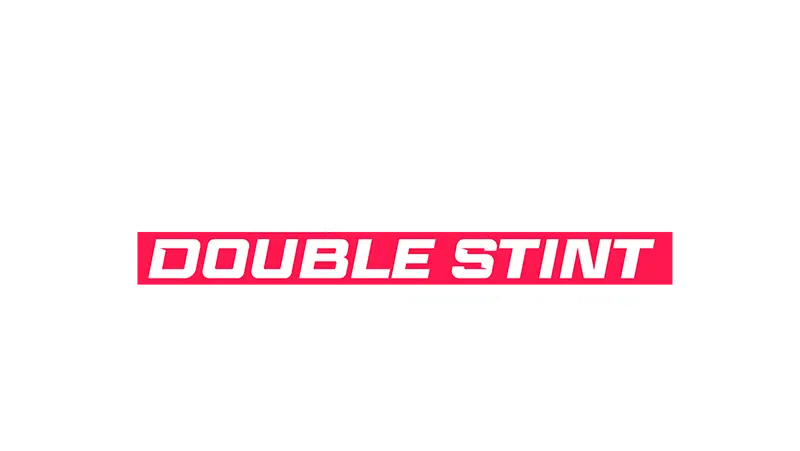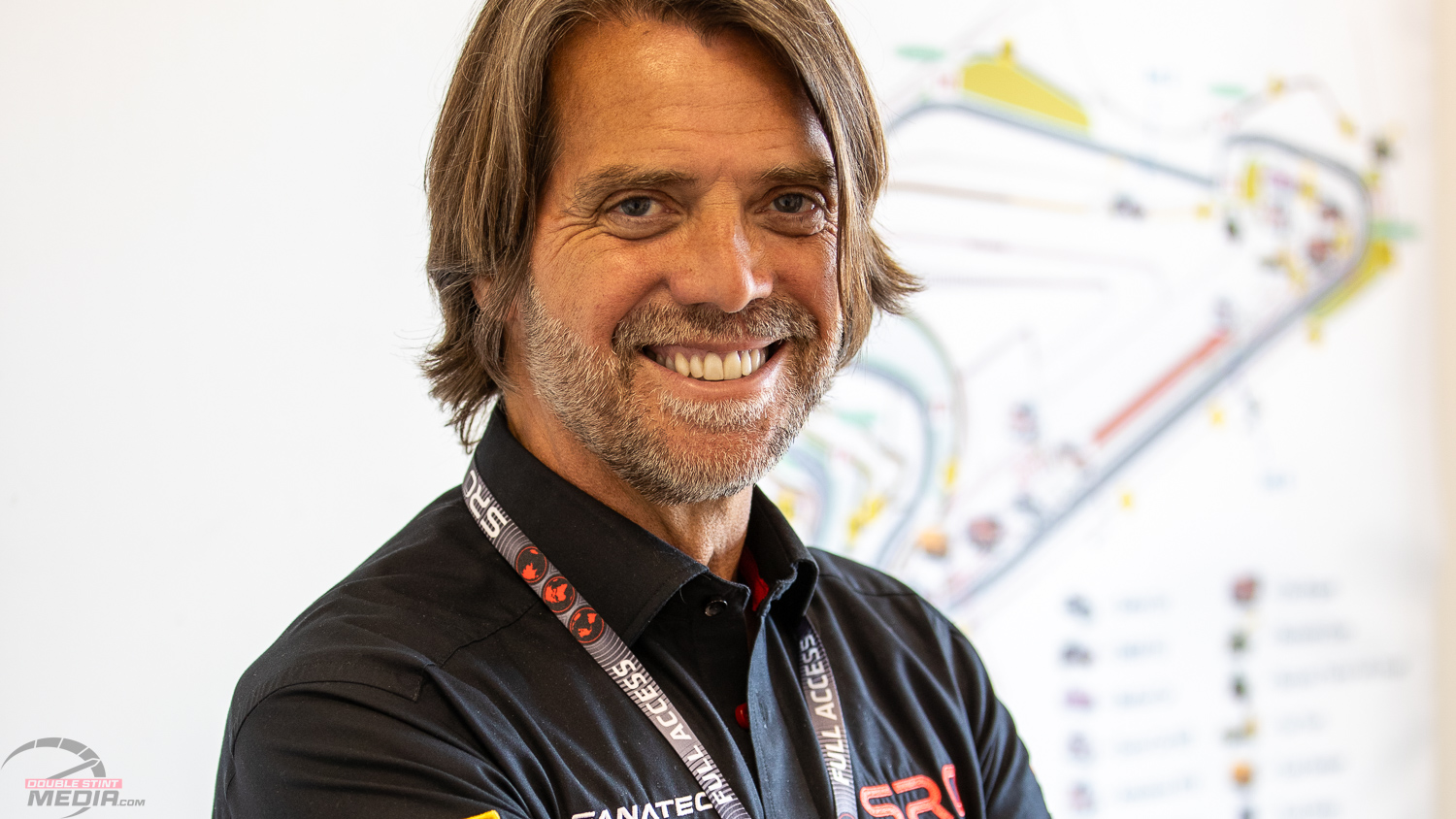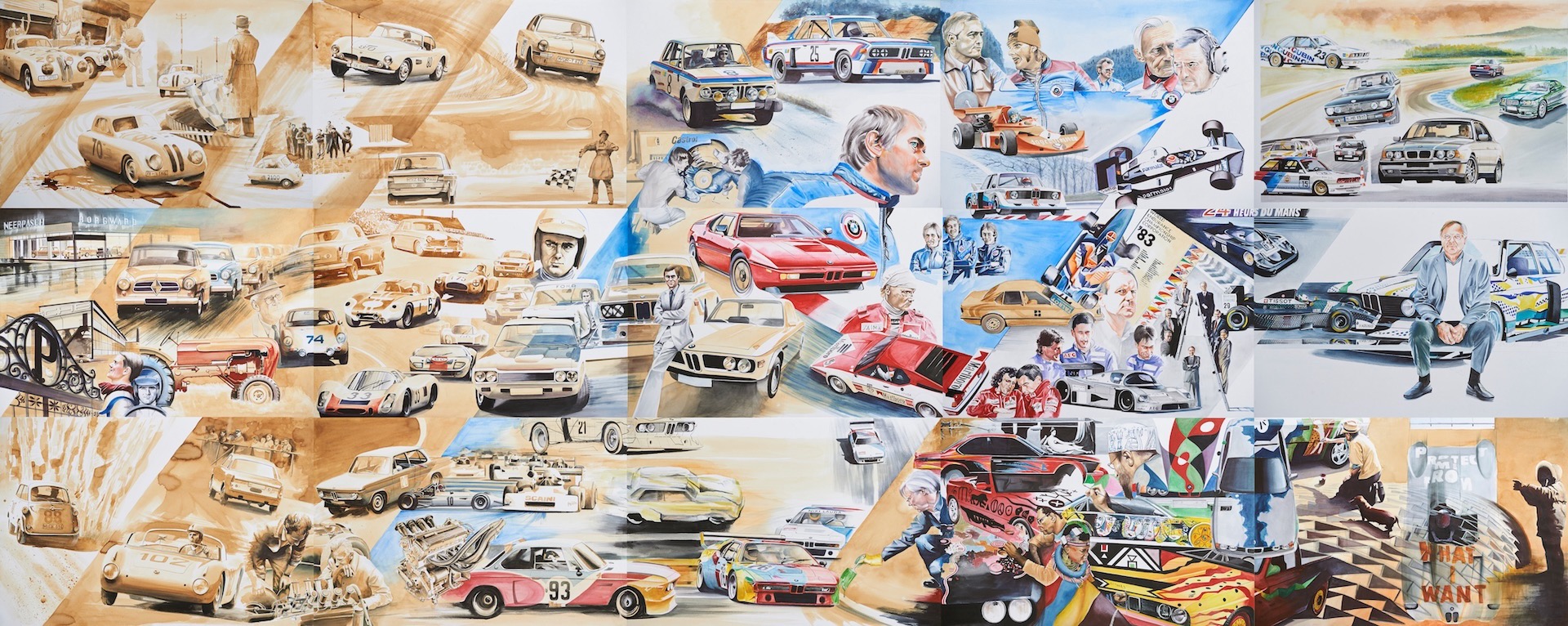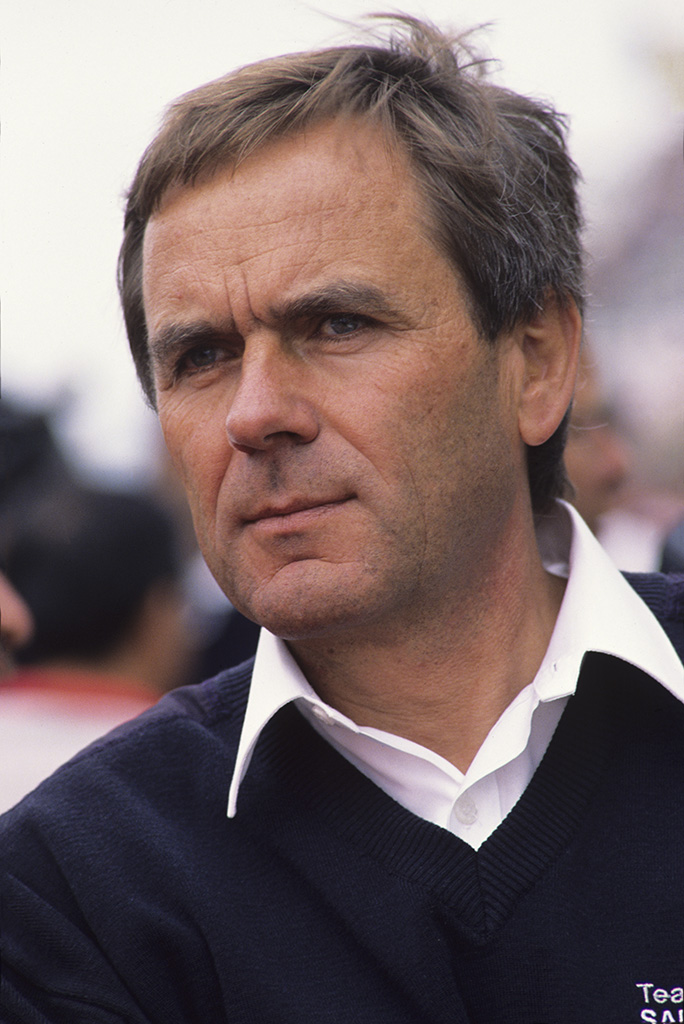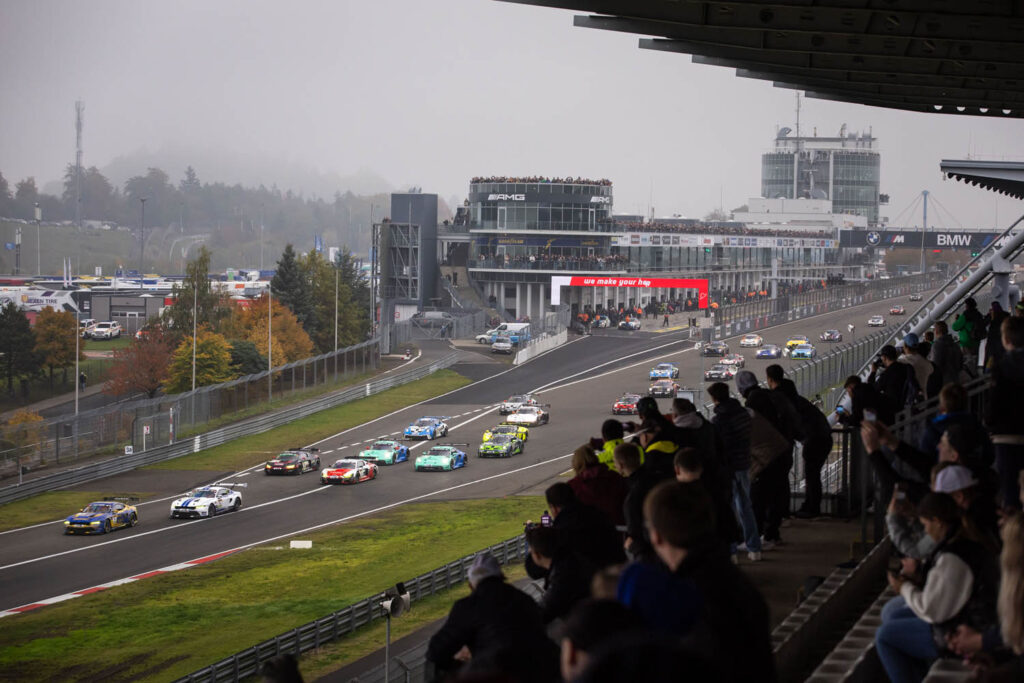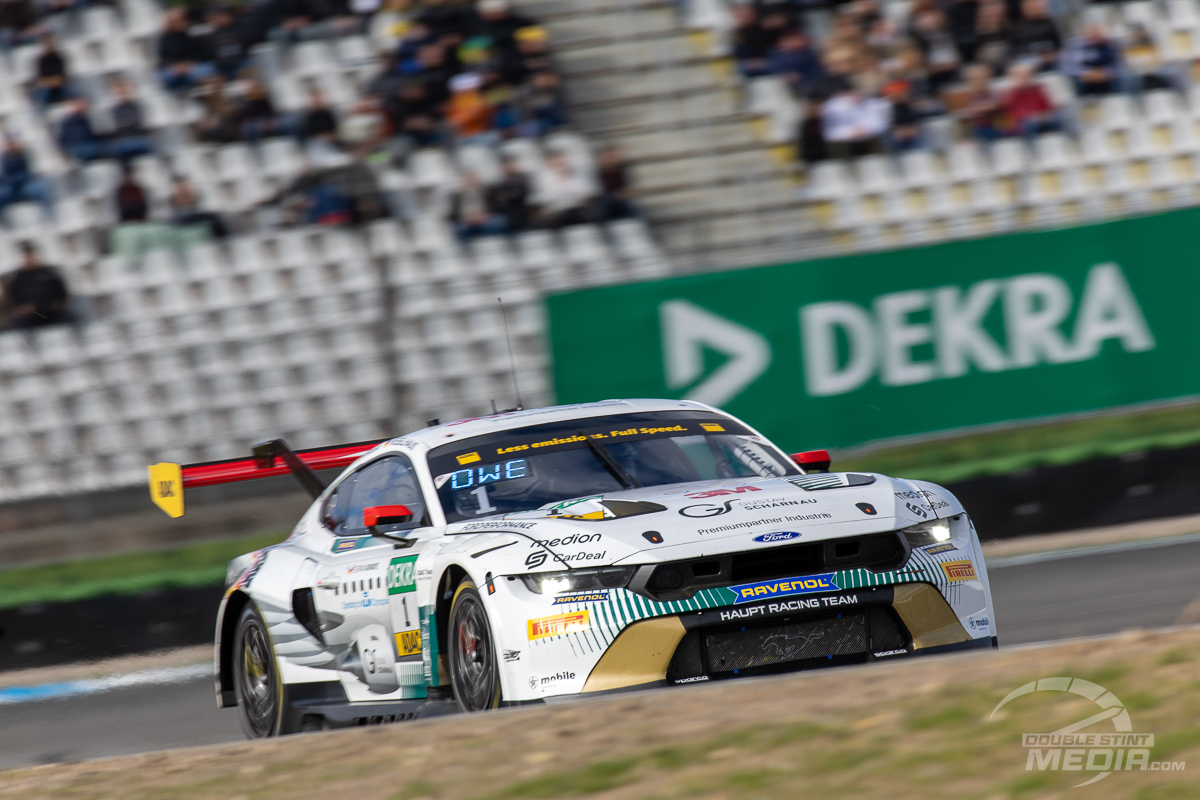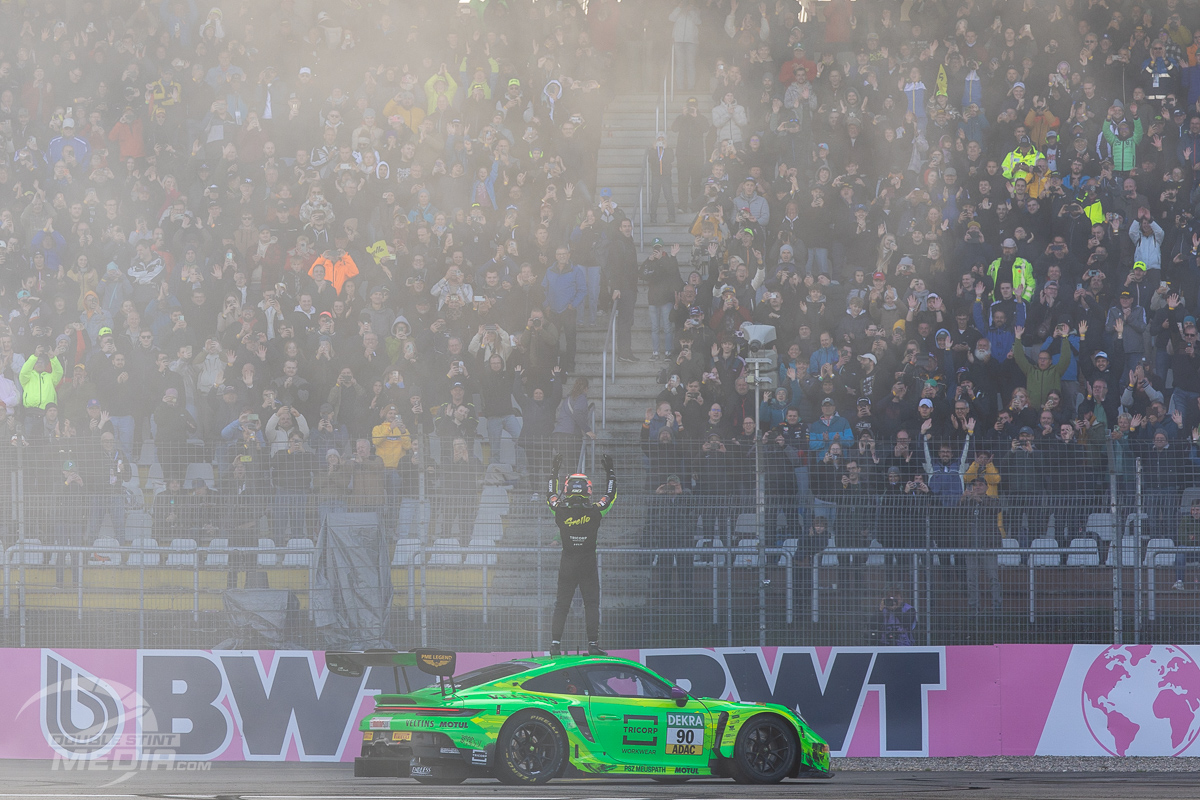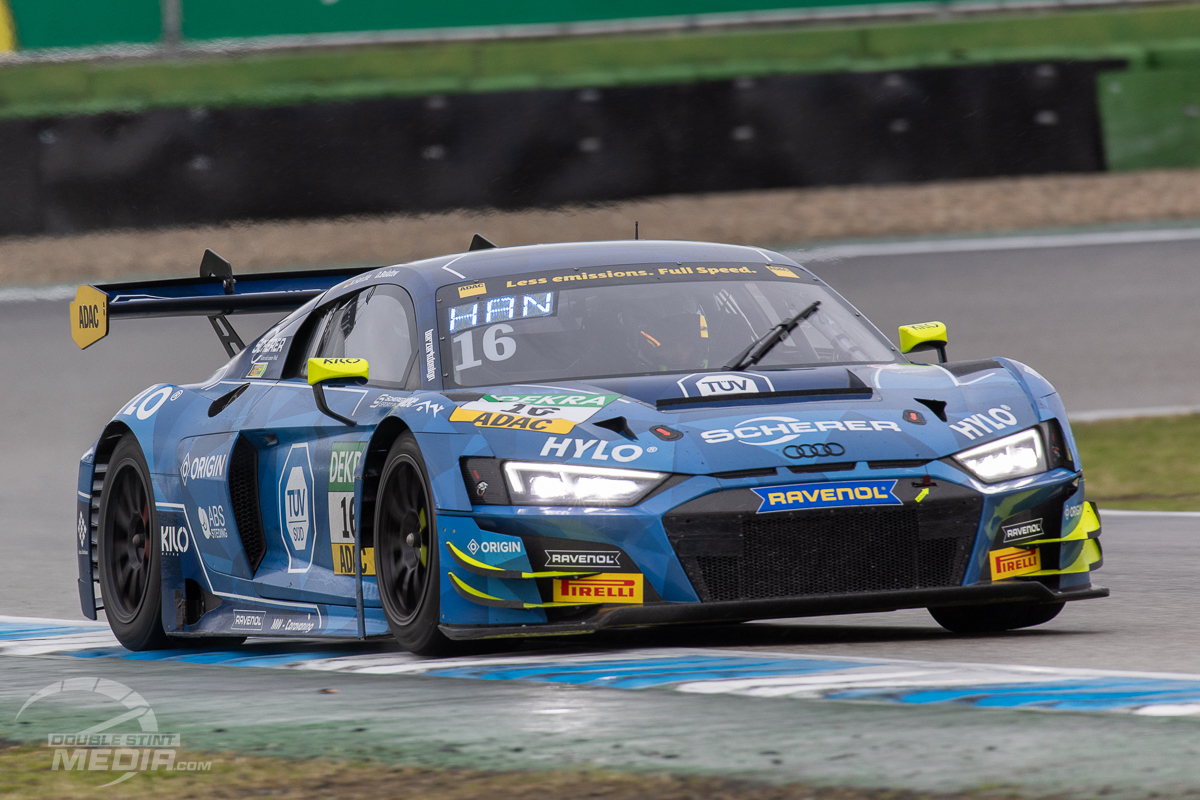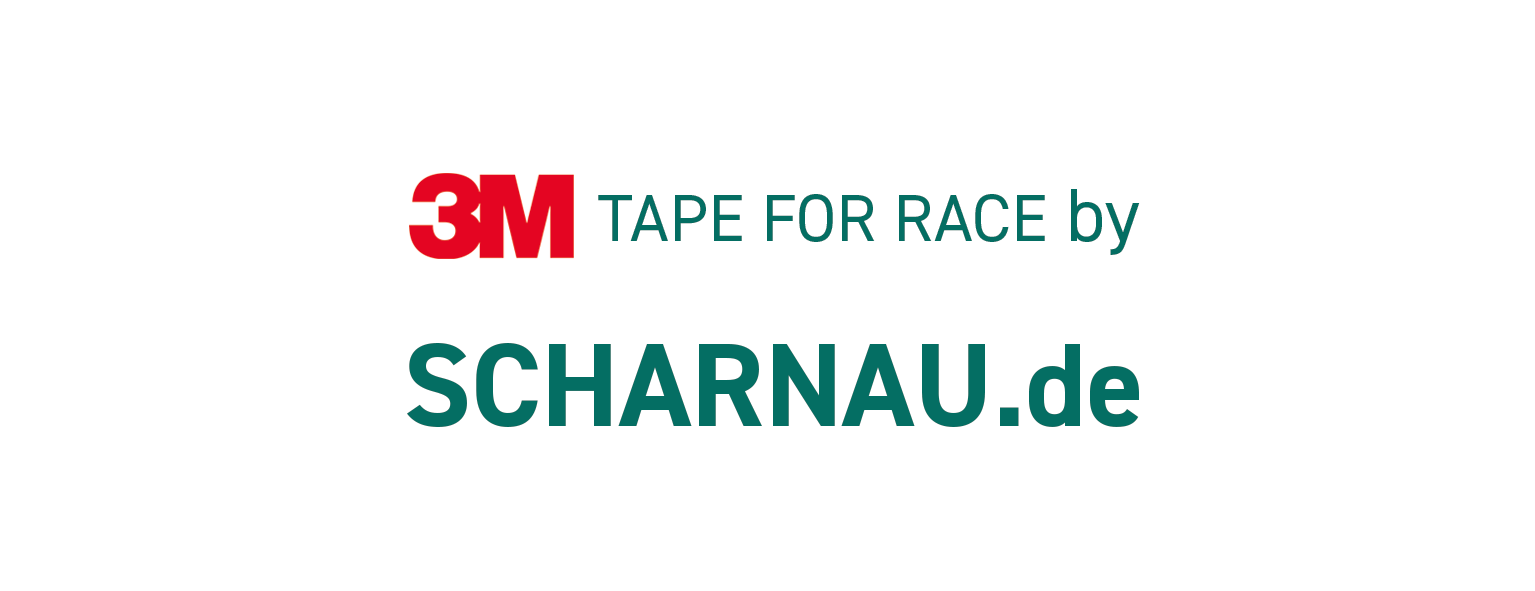The CEO of SRO, Stéphane Ratel (SR), sat down with Dr Werner Koch and Thomas Roth (DSM) of doublestintmedia.com during the Fanatec GT Challenge Europe round at the Nürburgring to reflect on the current state of the global SRO series and to give an outlook of 2024 and beyond as well as talking about sim racing as an integral part of the championship.
DSM: First of all thank you very much again for investing some time in us.
SR: I’m here for that
DSM: That’s right and we do our best to help and support you and get your GT business growing
SR: Thank you!
DSM: We have prepared some questions we would like to ask. First of all, we’ve been at Spa, but unfortunately we couldn’t find time to do the interview there already.
At Spa you had 70 cars in the 24 hour race and I thought it was a very good grid. Nice cars, good driver pairings, great sport, I enjoyed it. With Sprint Cup you had 42 cars and here at the Nürburgring 54 cars. Going back to an interview we did in 2013/14 we were also talking about numbers of the starting grid and your plans or your wishes what would be possible to have as a constant number of cars. Ten years down the road it looks really, really good. After all you must be a very happy man!
SR: It’s a record year for us, clearly. Around the world we never had so many cars running. We are at full capacity in many series. 55 full season here in endurance, 70 at Spa. We even did a bit of overbooking. We don’t like to do a waiting list. We know from experience when you’re going big numbers, you have one or two cars which don’t make it in the end. So we accepted the entries of 72 and we had 70 at the start. 55 in endurance, 42 in Sprint, 50 in GT4, 62 at Spa in GT4. 40 cars in Asia – full capacity. 36 with 18 GT3 and 18 GT4 in England. We have a little bit more room in America in Fanatec GT World Challenge America and in Australia which is in the making. But otherwise we’re full everywhere. And GT2, which is our new project, needs more time to continue to grow. But the success of GT racing around the globe is phenomenal. And it’s a bit scary because we can’t have more, we can’t take more. In many championships, if you take more you can only go down. I hope we keep it to the max or we will go down. This season has been a phenomenal success and we hope it will stay like this.
DSM: I think it’s the future of motorsport, where fans are involved as much as possible. Like DTM, which claimed to be close to the fans, but in reality they weren’t.
SR: For us one of our biggest satisfaction is here the last two years thanks in part to the presence of Valentino Rossi, but Germany is the wrong example for us, because the market is really DTM and now that DTM is exactly the same cars as us is difficult, but if we look everywhere else in Europe we had more public everywhere. I think it’s three reasons.
First: The name is better. We have the same series since 1994, but we have changed the name many times. BPR Endurance Series, FIA-GT Championship, Blancpain GT Series and now Fanatec GT World. But GT World Challenge is a good brand name. It’s easier for promotion than Blancpain was.
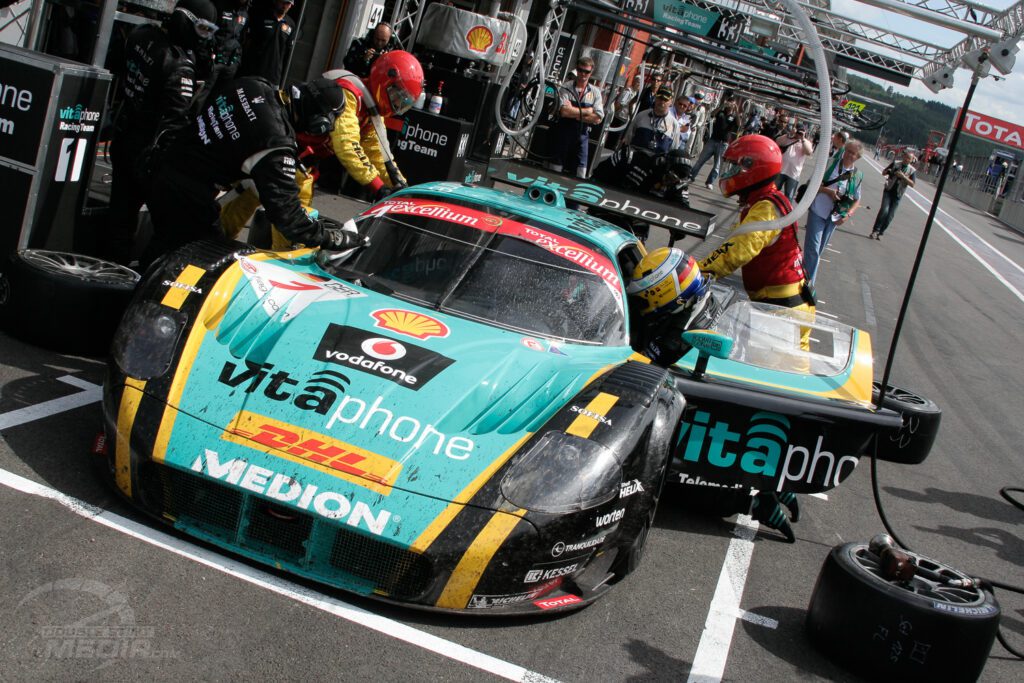
The second is sim racing has been helping us. It brought us to a wider, younger audience and the association with Fanatec in that regard is very good.
And of course the most important has been Valentino Rossi joining the championship and now even winning a race in Misano and scoring a podium in Brands Hatch. So that also helps the recognition of the championship and the people on site. So it’s growing, it’s growing in every aspect. I spend 30 years taking care of the grid, because the first thing you need is a grid and now that we have full grids we can mitigate our efforts to promotion and going forward our main focus for the following season is the promotion around notably of the 100th anniversary of the CrowdStrike 24 Hours of Spa. And we hope do something. We can have more people at Spa, it’s still very big event, but there are a lot less spectators than at the 24 hours of the Nürburgring. Which would be impossible to match, because the problem at Spa is camping, it’s not a circuit like Le Mans or Nürburgring with massive camping.
At Spa it’s much more limited. 24 hour races really benefit from grand camping capacity and we don’t have that at Spa, but we’ll try to improve.
DSM: Coming back to sim racing. Tim Heinemann scored the fastest lap of the race at the Spa 24 Hours. He is an accomplished sim racer and just recently transitioned to real life racing. Could you touch a bit more on how sim racing influences the real world racing?
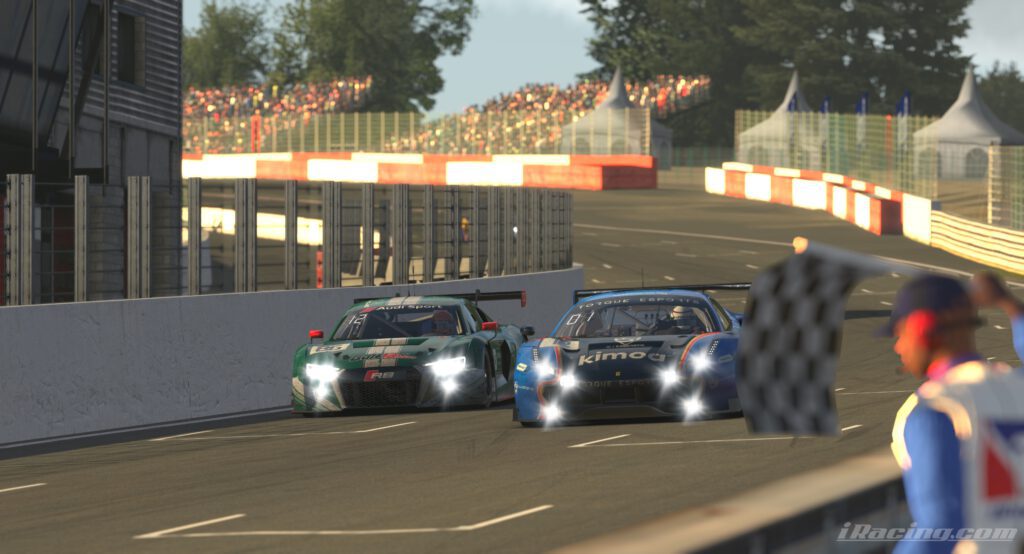
SR: With the release of the Grand Turismo movie now about the project with Darren Cox, Nissan and Jann Mardenborough may be 10 years ago, we’ve been close to this evolution of sim racer becoming real racer for some time, but during COVID we’ve really had this added interest in sim racing and we integrated it.
You have seen the Fanatec arena, seen all the young drivers of our championship competing there collecting points for their teams. I think we’re still the only championship in the world where you mix sim racing with real racing. They launch the sim racers competition on site this year which at the beginning I was a bit concerned we tried last year where we did it at Spa. You had all the sim racers coming from many places and when (my son takes care of it) he was like „Are you sure the people will come to the Nürburgring? Coming to the 24 Hours of Spa is something different than coming to the Nürburgring, an event with less public, that vibe around it will be more difficult.“ But they are all here, they’re doing it and it’s proving to be a success. And now we can even do the arena this weekend for Lamborghini who are going to do their own sim racing competition, so it’s an integration that works better and better and I hope it will continue to grow. I think with sim racing the sky is the limit you know. The number of people that can do it and we need to continue to working further on how to integrate people into this type of competition. The problem we had is the level. It’s a replication of why we do have this very large grid. Because we have Bronze, Silver, Gold and Pros. How to replicate that in the world of sim racing? Because if you do competition which always the same one wins, it’s less motivating for the others. So we have to work out a system to have the same ratings we have in the real world. This will open up sim racing to be more exciting for more people. If you race against a top sim racer, you don’t have a chance. We have some ideas we’re working on.
DSM: One point I would like to touch on. I find it very good that for example at the 24 Hours of Spa we only have one class – only GT3. Here at the Nürburgring – and by the way I’ve been working in race control for almost 10 years now being responsible for the GPS surveillance system „GPSAuge“ controlling the speed in double waved yellow and code 60 zones -, for me it’s always weird when I see a Dacia Logan competing with a fully blown GT3 car. I think it’s dangerous.
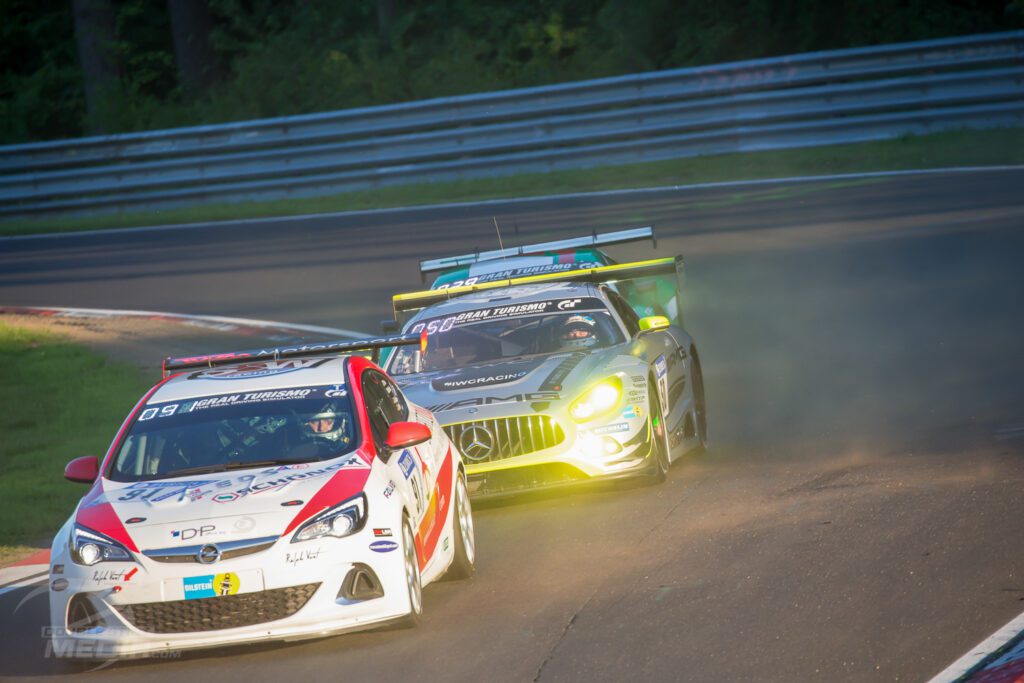
SR: Of course, we are very proud to have created the only GT3-only race with 70 cars with all the latest cars all with really high level teams and that’s why Spa is unique today with 70 cars all in one class. But 24 Hours Nürburgring has always been multi class competition, it’s part of the history and somehow it works like this. And also don’t forget that the track allows huge grids. It would be sad for the public, only 70 cars at the Nürburgring would look a little bit empty. It’s three times the size of Spa, so match Spa you would need 210 cars. And 210 GT3 cars is not possible.
DSM: My fear is – and we’ve already seen it this year – with the accident of the Dacia. We were quite lucky. The problem is simply the big delta between such a small car and a GT3 car at full speed.
SR: As I have already said, if the event joins IGTC it remains completely independent what type of car they want. I won’t get involved in that.
DSM: We talked about it in 2013, why did you do the 1000 km race just on the GP circuit and not the Nordschleife (referring to the Blancpain GT Series event). You mentioned that the teams participating regularly in the VLN would have an advantage.
SR: It’s a very specialized place. IGTC is a manufacturer competition among different teams. They would take specialized teams like the team who won with Ferrari this year. They are a specialized Nürburgring team. Each manufacturer can take a specialized team to race at the Nürburgring. If it was a team championship, a French team, British team would not have a chance at this circuit.
DSM: The many different classes in Fanatec GT Challenge with 5 classes this year instead of three in the past. Don’t you think this is a little bit difficult for the casual fan?
SR: I know, but somehow in the end of the day it provides big grids. Everybody is happy and we don’t really have micro-grids. All of them is decent size, I think the smallest is 7 cars this weekend, so each size is decent it still makes sense to go on the podium. The fans have to chose their class and look at the top. You have to be a very specialized fan to look in detail who is running which class. If you are a more casual fan, you look at the overall standings at the top. Most people do and what you like to see is a huge grid with a great diversity of cars and what makes it very special with such a system – I went back to racing a little bit myself after 20 years without turning the wheel and there is nothing more fun than to race. This guy who is alone now (pointing at the TV showing a back marker in the McLaren Trophy race) is probably enjoying himself, but he’s not having the optimal form.
In Fanatec GT Challenge, it’s rare that you’re on your own. You’re always racing. That’s what makes GT Challenge so special. You don’t have another series that has been constantly showing grids of 50-60 cars in the past 10 years. This is quite something and why people like coming here. As a driver you’re always in a fight, always in a race whatever your class is. And they work well our classes, the driver categorization. I always say, my biggest contribution to motorsport was not GT racing, my biggest contribution has been Balance of Performance and driver categorization. The two things that I have introduced to motorsport that have spread in the world of motorsport. I couldn’t have believed when I came up with Balance of Performance that 20 years later Le Mans in the top class will be using balance of performance. People were laughing at me and the same thing with driver categorization. People were like „What is this with the credit card colors?“ and now it spread around the world. Our success is BoP and driver categorization and it works, it really works. If you see the competition in each of these classes, it works.
My biggest contribution to motorsport was not GT racing, my biggest contribution has been Balance of Performance and driver categorization.
Stéphane Ratel
You can’t have 52 cars that don’t go on the podium if you have 55 cars. 52 who wonder why they race. And it’s we talked about it in sim racing to replicate that, if you want thousands of players that have a chance in competition. That’s what we need to achieve.
DSM: DTM used to be a manufacturer series with specialized cars and recently switched to using GT3 cars well…
SR: DTM creates a challenge on BoP, because it was created for endurance racing and our sprint format with two drivers. To use it in DTM, which is a pure sprint with a single driver, a manufacturer talked to Claude [Surmont, Technical Director SRO] when I was at the Norisring and wanting for an adjustment of one tenth of a second. When we introduced BoP with the FIA, the objective was to put all brands within 0,8 sec. Then the objective was to put all cars in half a second, now the objective in this championship is three tenths. But one or two tenths is extremely challenging. But in the DTM it’s there. They have many top drivers and it’s a challenge.
DSM: When ADAC GT Masters used your BoP, racing turned out to be better. We used to have 29 cars within just one second in qualifying.
SR: GT Masters was really good for the BOP. Now it’s more challenging, because you have even more pressure on the system, but I think that Claude is doing a fantastic job. We have to trust the system.
DSM: When I remember endurance racing 50 years ago. For me today, it’s really astonishing that these highly developed cars are maintaining a speed over 24 hours at almost maximum speed. It’s not 24 hours endurance racing, but 24 hours sprint racing. 50 years ago, just with minor issues a car broke down because of a 10 cents parts and had to retire two, three hours into the race.
SR: If you look at today, almost all retirements are due to accidents. A mechanical failure in GT3 is extremely rare. Extremely rare! You don’t have a broken gearbox, broken this, broken that. No.
DSM: It’s like in street cars, they require much less maintenance than they used to do. And they’re highly developed so that there are a million reasons to break down, but they don’t.
SR: They are really strong and that makes it enjoyable. You have all the expense to come to a 24 hour race and after two hours broken diff, broken gearbox, engine. If you don’t crash, you finish.
DSM: Going back to the 24 hours of Spa. We’ve seen the incident between Charles Weerts and Neil Verhagen, two BMW drivers. As we saw it, it was a thing that had to do with the FCY.
SR: We’ve been doing FCY for years, we never had a problem with it. We believe it’s a good system. We don’t do slow zones like at Le Mans, because it’s only justified on very long circuits like Le Mans. Even though Spa is long, it’s half the size of Le Mans. And I know; we’re sorry for the one incident. We’re not gonna change everything for one incident. And especially looking at it, it was „Ah, race director did a mistake“ – no he didn’t make a mistake. We looked at it in detail, he didn’t do a mistake. There was one FCY and that’s what FCY are for. We had a car in the gravel and they got out and then was the FCY which can happen. That’s why you don’t go straight to SC, you go to FCY because of the incident resolves itself rapidly you stop and go back to green. Shortly after there was another FCY. Even if it took out two top performing cars – and we’re sorry for BMW – we’re not gonna change the system that has been working well for years just because of one accident. Which was not tragic in any way, we didn’t have a casualty or someone badly hurt.
DSM: Sustainability. You have announced that you will be using a different fuel next year which is 100% sustainable
SR: Correct, 100% Bio.
DSM: Two or three years ago, we had 50% sustainable fuel in ADAC GT Masters.
SR: That’s why I said with this thing either you do nothing or you go full. On that we can thank the ACO, who showed the way. They’ve done it and we had to follow closely behind. It hasn’t been easy, there have been a lot of discussion with the manufacturers on the adaptation but since we have the same as ACO for you need to work on the mapping of the engine, you have to test the engine on the bench.
What the manufacturers are afraid of is that in the world of bio fuel you have many different formulas. You have Shell with 50%, some other with 30% or 60% and all with different formulas. It is becoming impossible for them, it’s too expensive. So the fact that we signed with TotalEnergies for the exact same formula as Le Mans, it was welcomed. There were some reservations in the beginning by some of the manufacturers, but now they worked on it. It will be a little bit more maintenance for the teams, because the fuel is more complex to maintain. But it is essential, because as SRO we do a big effort in sustainability. We collect a carbon tax for all the entries, we invest all the money collected into 8 different projects, which are all important projects. From capturing CO2 to planting trees, nature preservation. We spend quite a lot of money on that.
Next year will be 100% carbon offset, but that is considering greenwashing a bit, even if we do what needs to be done. Bio fuel is certainly the most visible part even though emissions from the race cars are only 5%, these are the most visible. We don’t calculate spectators coming to the race, because every sport has spectators even if it is cycling or tennis. We count the emissions from the logistics. Trucks, drivers flying in and all of this. And the race cars are only 5%, so we need to make an effort.
We are working on the future with our GTX, environmental formula. Electric production cars. Objective is 2025 to start with the Targa Florio and we’re very committed on that.
DSM: E-Racing?
SR: We can’t ignore it. It’s a fact of live and we need to look forward to the future. We will certainly continue to do this type of racing. We are the leader of GT racing, but we cannot just ignore the electrification of the coming GT cars. In 10 years most GT cars will be electric cars. If you want to continue to have a relation – we build a relation over the past 30 years with most GT manufacturers – and we need to use this relation to do something in the world of electric cars.
DSM: Mr. Ratel, thank you for spending some of your precious time with us for this insightful interview and we wish you great success for all your projects.
